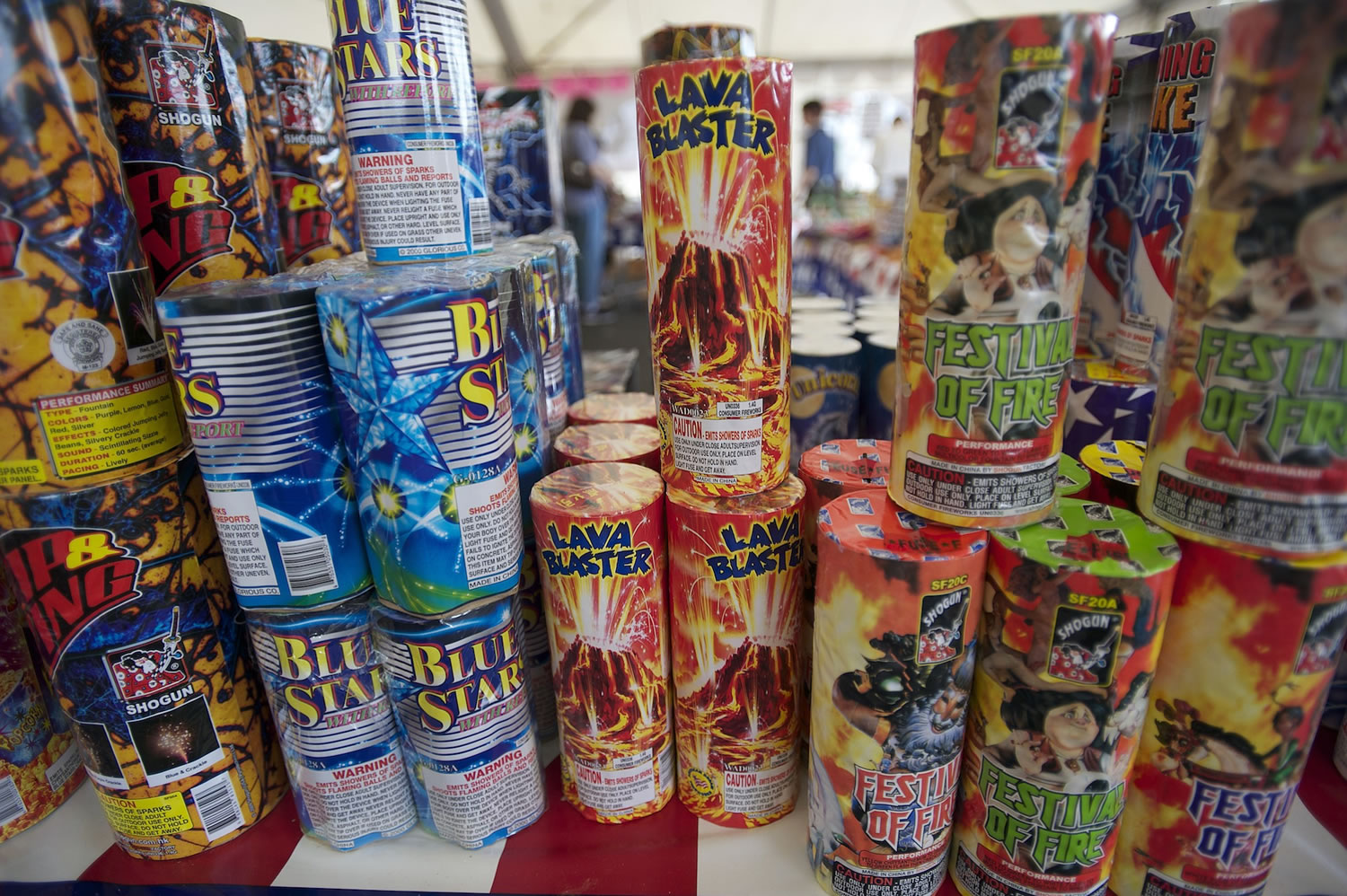Fireworks-related injuries were up last year in Washington.
Hospitals across the state reported 239 fireworks-related injuries in 2013, up from 226 injuries in 2012, according to a report by the Washington State Fire Marshal’s Office.
About one-third of the injuries reported last year were due to people holding fireworks in their hands. About 27 percent were the result of people standing too close to lit fireworks or being hit by fireworks, according to the report.
In Clark County, hospitals reported 16 fireworks-related injuries in 2013, according to the report. Only three counties — King, Pierce and Snohomish, all more populous than Clark — reported higher injury numbers, according to the report.
It’s all pomp and patriotism until someone burns a limb.
The number of fireworks-related injuries soared to their highest level in more than a decade last year, according to a U.S. Consumer Product Safety Commission report released last week. An estimated 11,400 injuries were reported during 2013, a staggering 31 percent climb compared to 8,700 injuries reported the year before.
Fireworks-related injuries were up last year in Washington.
Hospitals across the state reported 239 fireworks-related injuries in 2013, up from 226 injuries in 2012, according to a report by the Washington State Fire Marshal's Office.
About one-third of the injuries reported last year were due to people holding fireworks in their hands. About 27 percent were the result of people standing too close to lit fireworks or being hit by fireworks, according to the report.
In Clark County, hospitals reported 16 fireworks-related injuries in 2013, according to the report. Only three counties -- King, Pierce and Snohomish, all more populous than Clark -- reported higher injury numbers, according to the report.
Bob Adler, the commission’s acting chairman, said a direct cause for the jump is difficult to determine. On the one hand, he said, states such as Michigan, Maine and Arizona made fireworks more accessible to consumers. In other states, however, people may be taking safety for granted regardless of regulations.
“My first hope is that it’s just a fluke and an aberration,” Adler said. But “what we’ve seen is an expansion in the ability for members of the public to get access to fireworks, and that’s not necessarily a good thing.”
The 44-page report also details eight deaths in 2013 caused by head and chest trauma, or house fires that resulted from mishandled fireworks.
The CPSC study has a 95 percent confidence margin — meaning the number of actual injuries could vary by a few thousand in any given year.
The data are collected from hospitals through the commission’s National Electronic Injury Surveillance System.
Still, the sudden rise in injuries may be a cause for concern as the nation prepares for the Fourth of July holiday and families load up on sparklers, bottle rockets and other backyard pyrotechnics. The American Pyrotechnics Association in Bethesda, Md., predicts sales of consumer fireworks will exceed $675 million in 2014, an all-time record.
As one might expect, a majority of the fireworks-related injuries last year occurred in the month surrounding Independence Day. CPSC conducted an in-depth study of the 7,400 injuries reported between June 21, 2013, and July 21, 2013. Here’s what they found:
Men were more likely to be injured than women, 57 percent to 43 percent.
Roughly half of the injured were 25 or younger. Children under 4 accounted for 14 percent of the injuries.
Which fireworks caused the most injuries? Sparklers accounted for 2,300 of the 7,400 injuries reported during the in-depth study. The flickering wands burn at roughly 2,000 degrees, Adler noted, and often wind up in the hands of children.
Hands and fingers were the body parts most likely to be burned or otherwise injured, accounting for 36 percent of injuries during the monthlong study. They were followed by the head and face (22 percent), eye (16 percent) and leg (14 percent).
A majority of the injuries weren’t severe enough to require an extended hospital stay. An estimated 91 percent of the injured were treated at an emergency room and discharged. Roughly 5 percent were treated and transferred to another hospital; approximately 3 percent were admitted to the hospital. About 2 percent of victims left the emergency room without being seen, according to the report.
Both the American Pyrotechnics Association and Consumer Product Safety Commission offer safety tips on how to avoid becoming a statistic this year.



